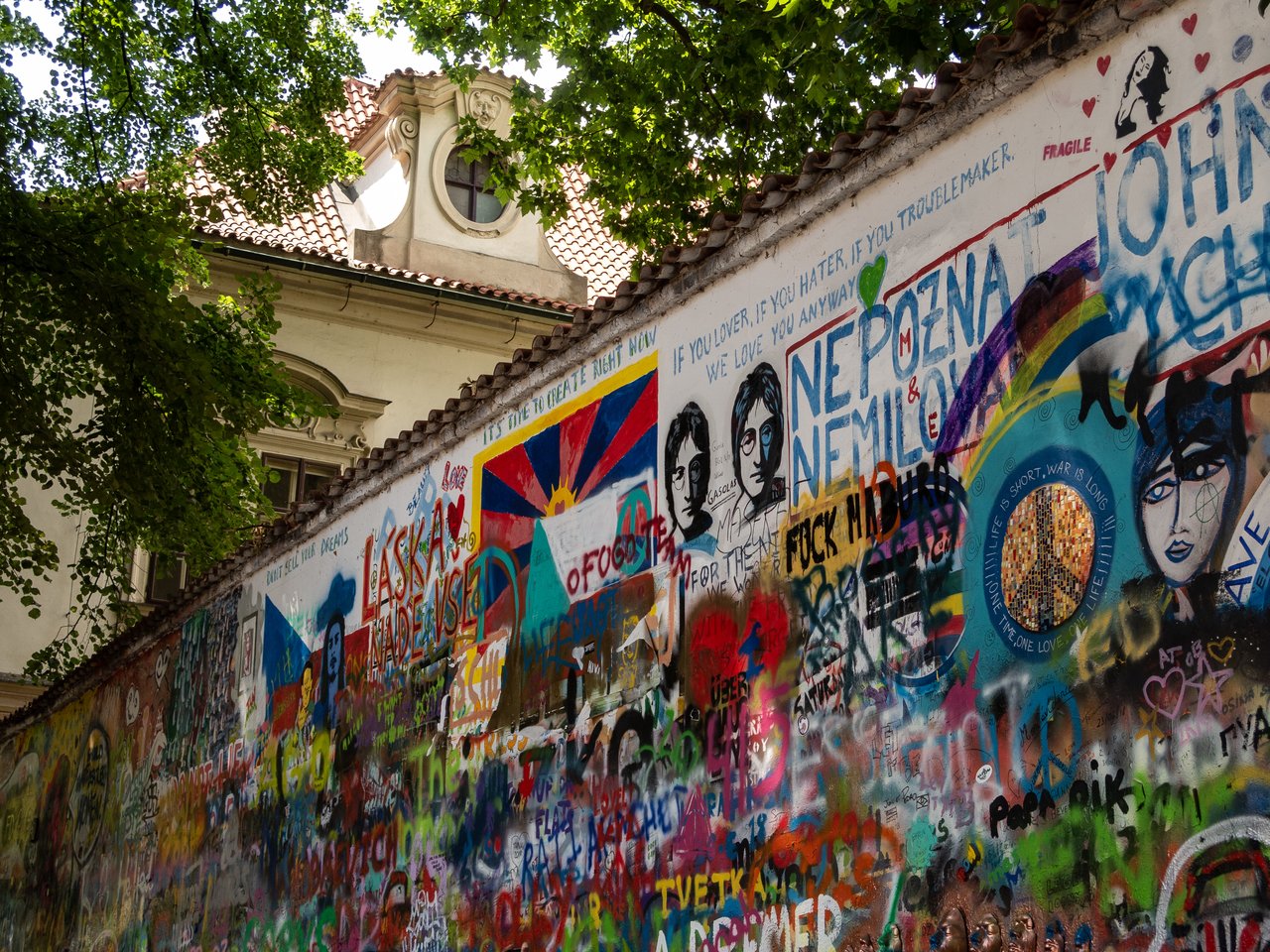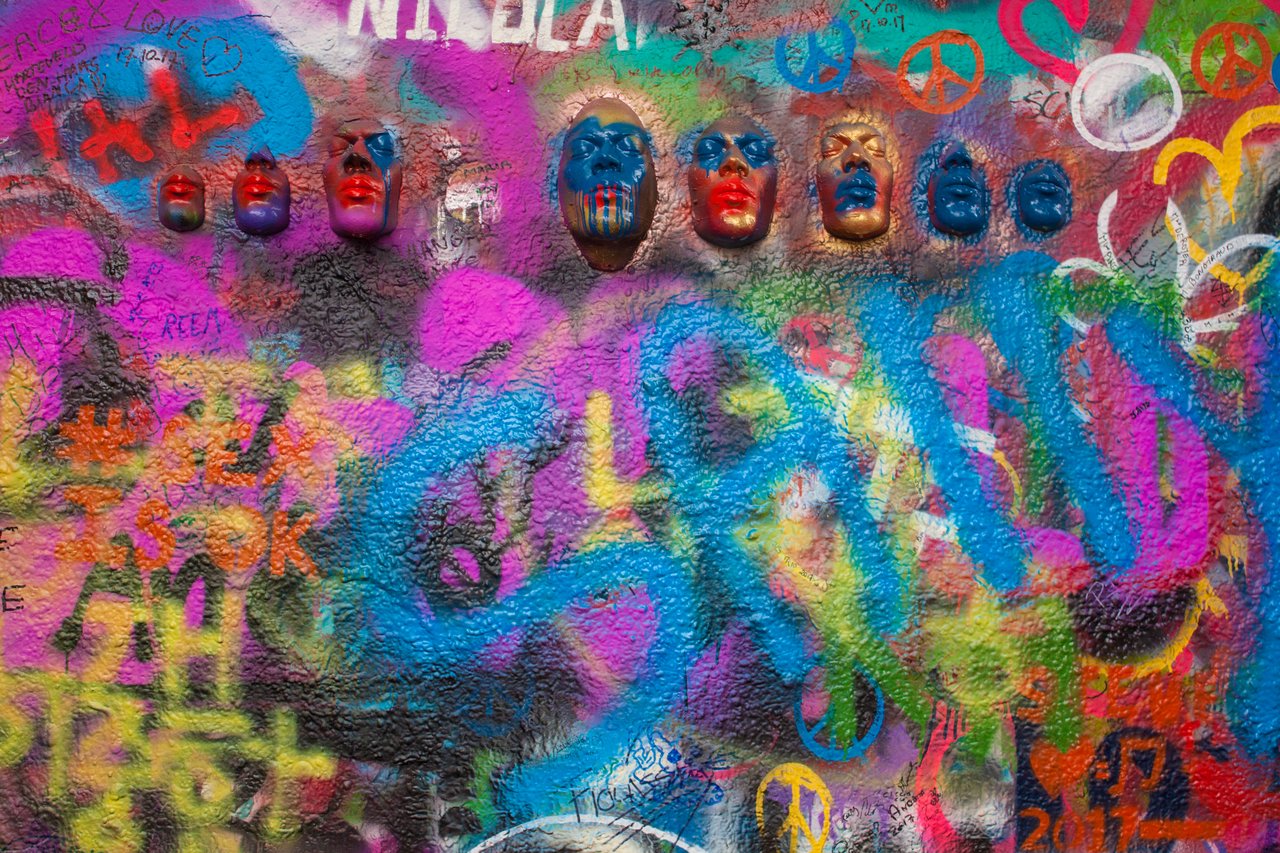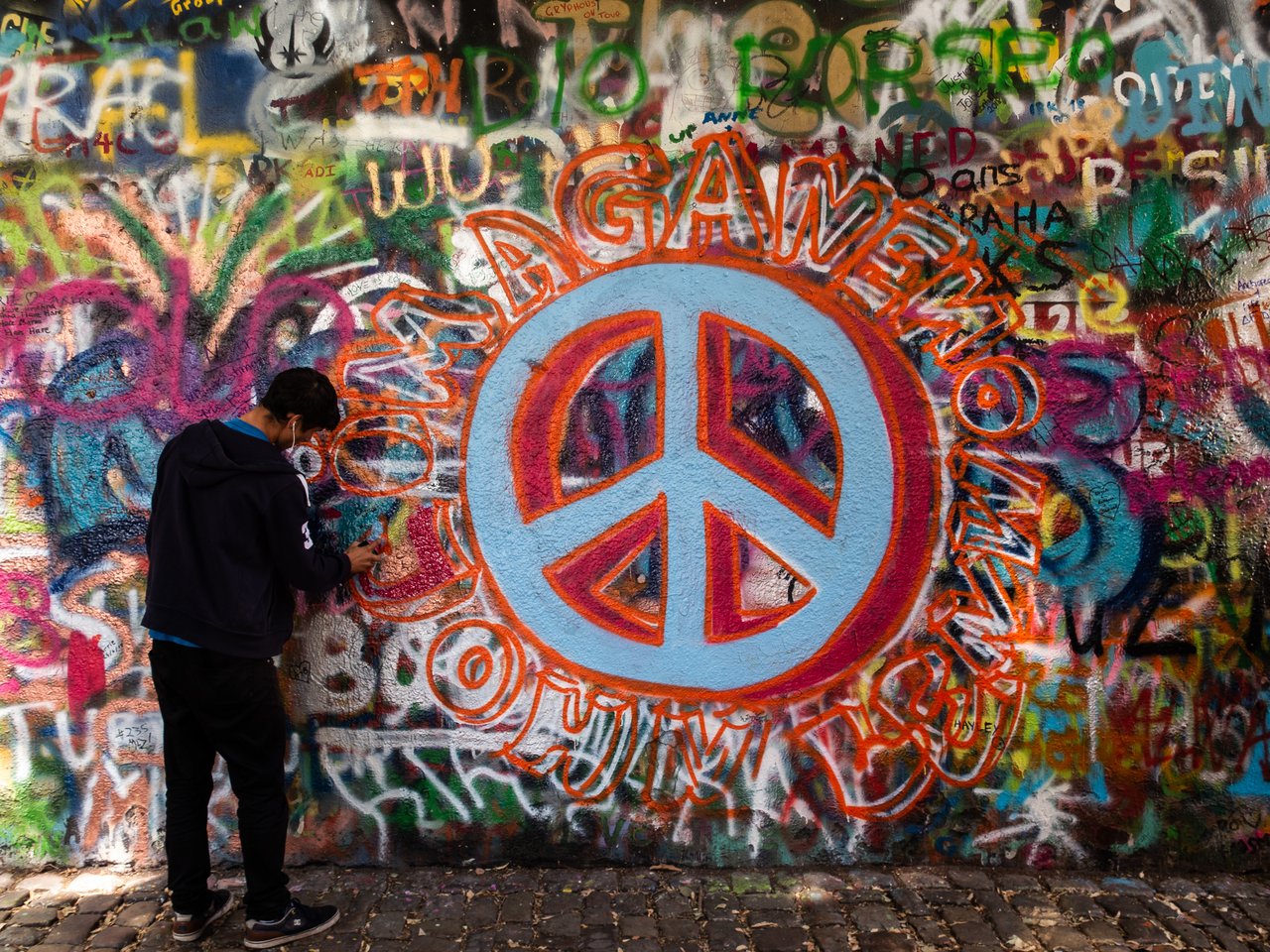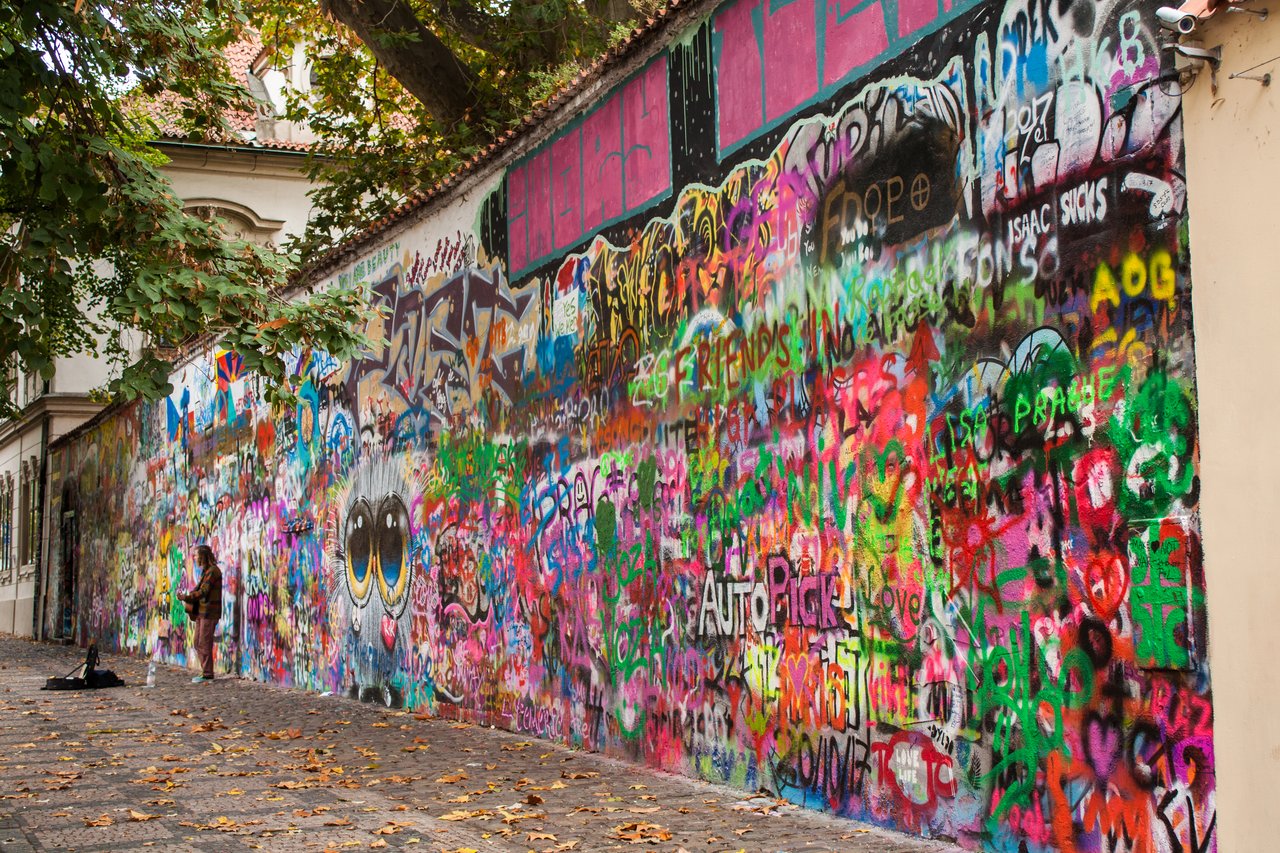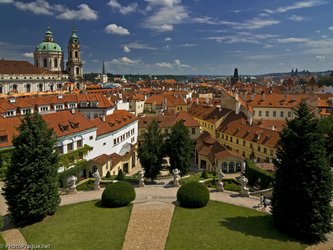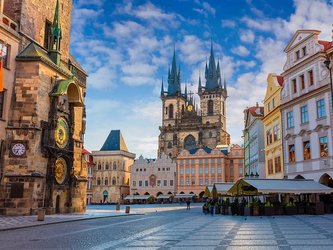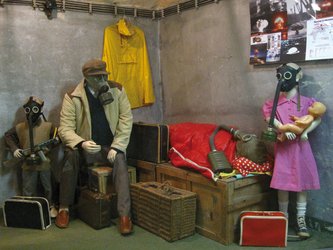Among Prague’s monuments, the Lennon Wall holds a position of very high esteem. It is neither a planned monument nor an officially sanctioned memorial. It is a spontaneously conceived graffiti-covered wall which stands in front of the Buquoy Palace, seat of the French embassy. Back in the day, it was an unexpected bastion for freedom of expression in the limbo of the late era of Communist totalitarianism.
The first inscriptions date back to 1968, when Prague was covered in slogans denouncing the Soviet occupation. In the 70s, there began to appear messages to the famous actor Jan Werich, who lived nearby and whom the Communists had forbidden to work. The decisive moment came in December of 1980, when the wall became the symbolic tombstone to the murdered Beatle, John Lennon. The date of his death, December 8, became a date of unofficial meetings which over the years began to turn more and more into demonstrations against the regime. Repression and police brutality against demonstrators did not help matters, nor did re-painting the wall green. Messages of peace, love and freedom kept appearing again and again, and the place acquired its own unofficial fame.
After 1989, the Lennon Wall became one of the symbols of anti-communist resistance. Unfortunately, its popularity has also been its undoing, turning it from a lively and authentic symbol of love and freedom, into a tourist attraction that is now but a shadow of its old self. In spite of this, the wall is a must-see. There are very few places that will bring you as close to the historical events that helped uproot the Communist dictatorship and finally give the people their longed-for freedom.

